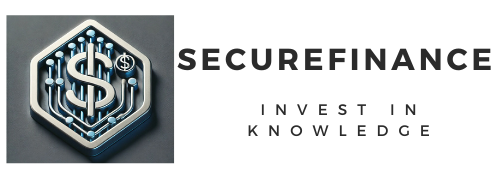
Navigating a high-flying career in luxury aviation is exhilarating. With it comes a unique lifestyle filled with international layovers, five-star experiences, and, for many, a generous income. However, while this career path dazzles with perks and prestige, it also demands smart, personalized financial management. That’s where wealth planning for flight attendants becomes not just important—but essential.
Whether you’re assisting celebrities aboard Gulfstreams or managing first-class cabins on international flights, your financial journey requires a custom map. This guide aims to equip luxury aviation professionals with actionable, straightforward strategies to manage income, build wealth, and secure a vibrant financial future—without compromising the luxury lifestyle you love.
What is Wealth Planning for Flight Attendants?
Wealth planning for flight attendants is a structured approach to managing finances that reflects the demands and nuances of working in the skies. Unlike the traditional 9-to-5 income model, flight attendants—especially those in first-class or private jet roles—navigate erratic schedules, tipping-based earnings, global tax complexities, and irregular income streams from various allowances and incentives.
This type of planning includes everything from setting budgets that accommodate layovers in Paris, to preparing for retirement despite non-linear employment benefits. It also spans choosing investment strategies that don’t require constant monitoring—perfect for those 40,000 feet above with patchy Wi-Fi.
A tailored plan for a flight attendant must also embrace flexibility. Your financial roadmap should glide with you through different time zones, accommodate contract work, and consider lifestyle aspirations that often exceed those of land-bound careers.
Unique Financial Challenges in High-End Aviation Careers
High-end aviation professionals face a kaleidoscope of financial challenges. From unpredictable shifts to complicated tax statuses, these hurdles make wealth planning even more critical. Here are the main complexities:
-
Irregular Pay Schedules: Charter and private aviation professionals may have irregular assignments. This fluctuation makes consistent saving harder without a smart strategy in place.
-
Per Diem vs. Salary Confusion: Many attendants earn a blend of per diem allowances and base salaries. The lines between taxable and non-taxable income can blur, causing trouble at tax time.
-
International Banking Issues: Frequent travel means dealing with multiple currencies, ATM fees, and sometimes even offshore accounts.
-
Lack of Retirement Plans: Especially in private aviation or freelancing, traditional 401(k)s may not be offered—meaning retirement planning is squarely your responsibility.
-
Social Pressure and Lifestyle Creep: Working with high-profile clients and in luxurious environments can tempt even the most frugal flyers into splurging—luxury can quietly inflate your lifestyle without you noticing.
Despite these challenges, with a focused plan and financial literacy, flight attendants can soar beyond just living paycheck to paycheck. Wealth planning is not about sacrificing comfort—it’s about building freedom and options for your future.
Income Streams for First-Class and Private Jet Flight Attendants
Understanding where your money comes from is the first step in mastering it. Unlike many industries, flight attendants in elite aviation can enjoy multiple income streams:
-
Base Salary: Typically tied to experience and the airline or employer.
-
Per Diem Payments: Daily allowances to cover food and incidentals, often tax-free.
-
Bonuses and Tips: In private aviation, gratuities can significantly boost take-home pay.
-
Freelance and Ad Hoc Flights: Especially for contract attendants on private jets.
-
Sponsorships or Social Media Income: Many modern flight attendants build a personal brand and monetize content.
Knowing the composition of your income helps in designing a tax strategy, determining cash flow, and allocating funds toward savings and investments. It also provides clarity when calculating emergency funds or negotiating contracts.
Additional Perks and Tax Implications
Flight attendants often receive non-monetary perks that contribute indirectly to their financial health, such as:
-
Free or Discounted Flights: Reduces vacation expenses.
-
Hotel Points and Airline Miles: These can translate into luxury for less or even be sold (in certain regions).
-
Uniform Allowances or Reimbursements: Small but helpful savings.
However, perks can also become liabilities if you don’t plan for their implications. For instance, failing to report taxable benefits like cash tips or improperly claiming travel deductions can lead to audits and penalties.
Therefore, a tax-savvy flight attendant works closely with an accountant familiar with international travel and aviation careers. Together, they ensure compliance while maximizing deductions legally.
You Can Also Read : Top Retirement Plans for High-Earning Pilots and Airline Crew
Setting Up a Travel-Friendly Budget
Budgeting doesn’t mean tightening your belt; it means giving every dollar a destination. A travel-friendly budget helps you spend mindfully—no matter where in the world you are.
Tips for crafting a flight attendant-friendly budget:
-
Use a Cloud-Based Budget App: Tools like YNAB or PocketGuard let you log expenses from anywhere.
-
Create Categories for Layover Spending: Differentiate between daily life and travel splurges.
-
Account for Currency Conversions: Budget in USD but track local expenses by converting back to base currency.
And here’s a handy trick: Set up two checking accounts—one for everyday life at home and one for travel-related expenses. That way, you’ll never accidentally overspend your food budget in Dubai on a shopping spree.
